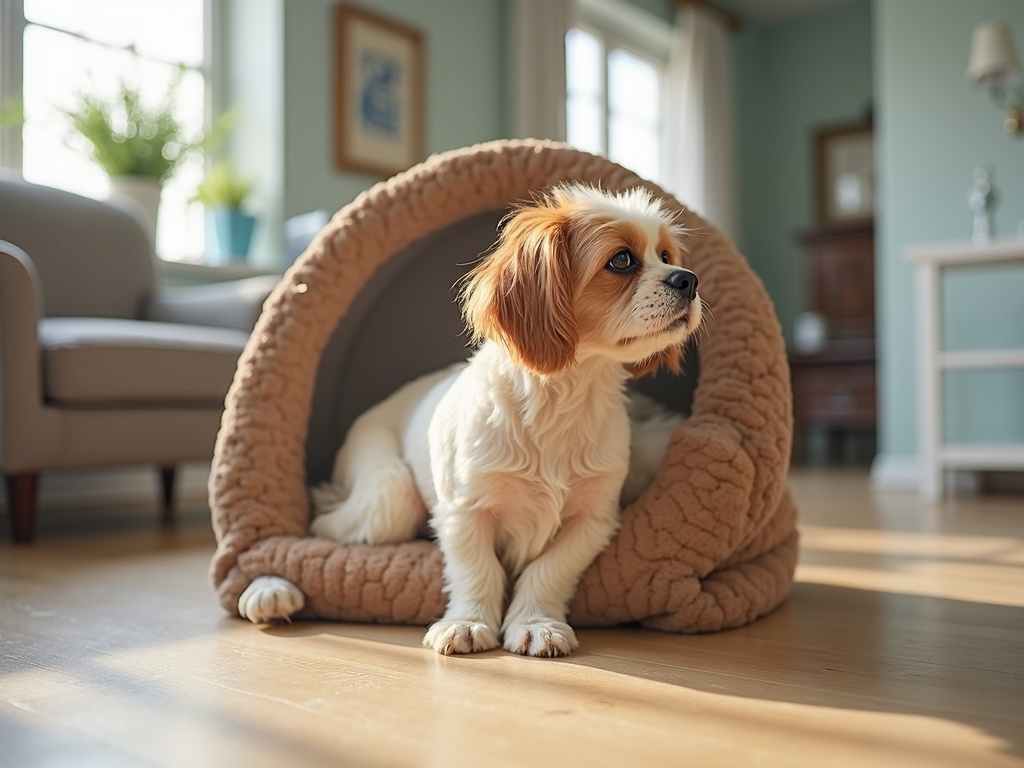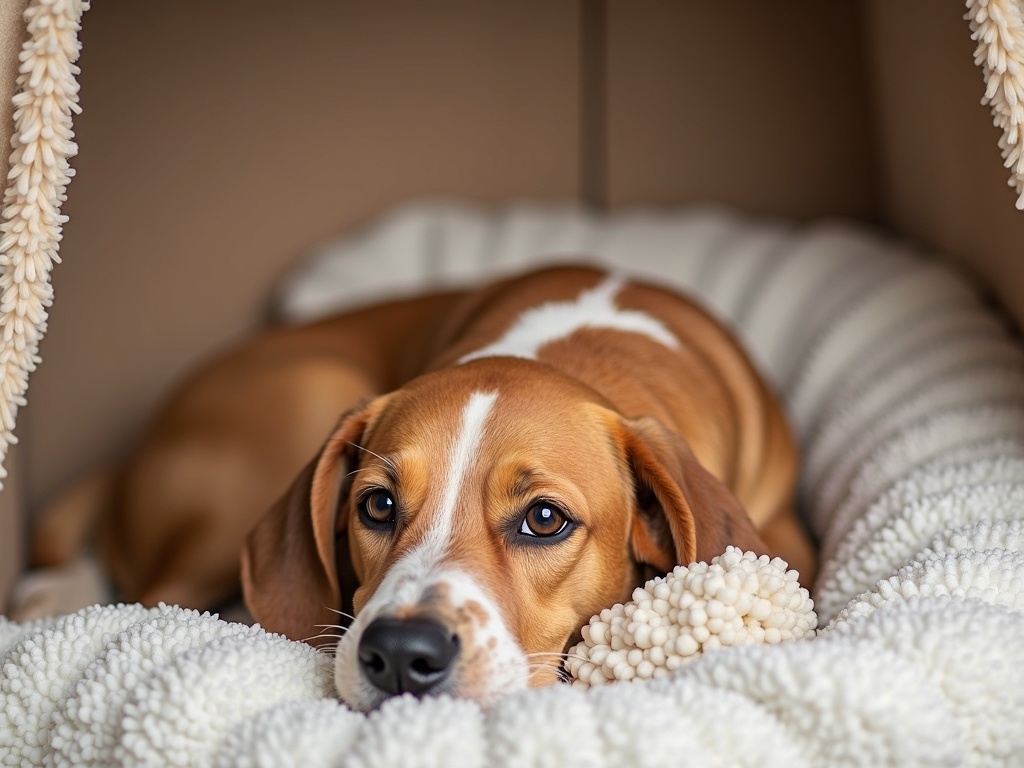Establishing a Perfect Dog Bedtime Routine for Successful Crate Training
The image of a puppy sound asleep in its crate, a picture of utter canine contentment, is a goal for many dog owners. But achieving that peaceful scene requires more than just luck. It requires a well-structured and consistently executed bedtime routine, especially when crate training. Just like a calming ritual soothes a human child before sleep, a dog bedtime routine sets the stage for a restful night and reinforces the crate as a safe and positive space. Let’s explore how to craft the perfect dog bedtime routine for crate training, ensuring sweet dreams for both you and your furry friend.
Why a Bedtime Routine is Crucial for Crate Training
Crate training isn't just about confinement; it’s about providing your dog with a den, a secure and comfortable retreat. A consistent bedtime routine plays a vital role in associating the crate with positive experiences and relaxation. Here’s why:
- Reduces Anxiety: A predictable routine alleviates anxiety in dogs, particularly puppies adjusting to a new home or those prone to separation anxiety. Knowing what to expect brings comfort.
- Promotes Relaxation: Specific activities, such as gentle petting or calming music, can lower a dog's heart rate and prepare them for sleep.
- Reinforces the Crate as a Safe Space: By associating the crate with positive experiences like treats, toys, and a comfortable bed, you foster a sense of security and belonging.
- Establishes Consistency: Dogs thrive on routine. A regular bedtime helps regulate their internal clock, making it easier for them to settle down and sleep through the night. This consistency builds confidence and trust.
- Prevents Nighttime Accidents: A well-timed potty break as part of the routine minimizes the likelihood of accidents in the crate, leading to a cleaner and more positive crate training experience.
Crafting the Ideal Dog Bedtime Routine
The perfect bedtime routine is tailored to your individual dog’s needs and personality. However, a general framework can be adapted to suit most dogs, especially those undergoing crate training. Here’s a step-by-step guide:
1. Evening Exercise: Burn Off Excess Energy
An evening walk, play session, or even some indoor fetch is crucial for tiring out your dog before bedtime. A tired dog is far more likely to settle down easily in their crate. Adjust the intensity and duration based on your dog’s breed, age, and energy levels. A puppy might need a gentler play session, while a young, energetic dog might benefit from a longer walk or a vigorous game of tug-of-war.
2. Dinner Time: A Predictable Meal Schedule
Establish a consistent dinner time, ideally a few hours before bedtime. This allows ample time for digestion and reduces the likelihood of needing a late-night potty break. Avoid giving large meals right before bed, as this can lead to discomfort and restlessness. Discuss appropriate feeding schedules with your veterinarian.
3. Final Potty Break: Empty the Bladder and Bowels
This is perhaps the most important step in preventing nighttime accidents. Take your dog outside for a final potty break right before crating them for the night. Use a verbal cue, such as Go potty, to associate the action with the command. Reward them with praise and a small treat immediately after they eliminate. This reinforces the desired behavior.
4. Wind-Down Time: Quiet Activities and Relaxation
Transition from active play to calming activities in the hour or so before bedtime. Avoid stimulating games or exciting interactions. Instead, opt for gentle petting, grooming, or quiet cuddle time. This helps relax your dog and prepare them mentally for sleep. Some dogs also enjoy a relaxing massage or gentle brushing.
5. The Crate Ritual: Making it Positive
Make entering the crate a positive experience. Toss a favorite toy or a small treat inside to encourage your dog to enter willingly. Use a calm and reassuring voice. Avoid forcing your dog into the crate, as this can create negative associations and increase anxiety. If your dog is hesitant, start by feeding them their meals inside the crate with the door open, gradually increasing the duration they spend inside.
6. Comfort and Security: Creating a Den-Like Atmosphere
Ensure the crate is a comfortable and inviting space. Line it with a soft, comfortable bed or blanket. You can also add a familiar-smelling item, such as an old t-shirt with your scent, to provide additional comfort and security. Some dogs also benefit from a chew toy to keep them occupied. Consider covering the crate with a blanket or sheet to create a den-like atmosphere and reduce visual stimulation.
7. Calming Sounds: White Noise or Gentle Music
Soothing sounds can help mask outside noises and create a more relaxing environment. Consider using a white noise machine, a fan, or playing calming music specifically designed for dogs. There are numerous playlists available on streaming services featuring relaxing melodies and nature sounds that can help your dog drift off to sleep.
8. Dim the Lights: Signalling Sleep Time
Dimming the lights signals to your dog that it’s time to sleep. A dark or dimly lit room encourages the production of melatonin, a hormone that promotes sleep. If your dog is afraid of the dark, you can use a nightlight to provide a small amount of illumination.
9. Verbal Cue: A Consistent Bedtime Command
Use a specific verbal cue, such as Night night or Go to bed, as you guide your dog into the crate. This helps them associate the command with the action of going to sleep. Repeat the cue consistently each night to reinforce the association.
Troubleshooting Common Bedtime Issues
Even with a well-established bedtime routine, some dogs may still experience difficulties settling down in their crate. Here are some common issues and how to address them:
- Whining or Barking: If your dog whines or barks in the crate, avoid immediately rushing to their side. This can inadvertently reinforce the behavior. Wait for a pause in the vocalization before acknowledging them with a few calming words. If the whining persists, it could indicate a need to potty, or anxiety. Rule out potty needs first. If anxiety is suspected, consult a vet or certified trainer.
- Anxiety: Signs of anxiety include panting, pacing, drooling, and attempts to escape the crate. Make sure the crate is not associated with negative experiences. If anxious, start slowly and build up crate time gradually. Consult with your veterinarian or a certified dog trainer to address underlying anxiety issues.
- Restlessness: If your dog is restless, ensure they have had adequate exercise and a final potty break. Make sure the crate is comfortable and the room is dark and quiet. A calming aid, such as a pheromone diffuser, may also be helpful.
- Accidents in the Crate: Accidents can occur due to insufficient potty breaks, anxiety, or medical conditions. Rule out medical issues with a vet visit. Ensure consistent and timed potty breaks are part of the bedtime routine. Thoroughly clean the crate after each accident to eliminate odors that could attract repeat offenses.
Essential Tools for a Successful Bedtime Routine
Here's a checklist of items to help you establish a smooth and effective dog bedtime routine for crate training:
- Comfortable Crate: Choose a crate that is appropriately sized for your dog, allowing them to stand up, turn around, and lie down comfortably.
- Soft Bedding: Provide a comfortable bed or blanket inside the crate to create a cozy and inviting space.
- Favorite Toys: Include a few of your dog's favorite toys in the crate to provide entertainment and reduce anxiety.
- Treats: Use small, high-value treats to reward your dog for entering the crate and settling down.
- White Noise Machine or Fan: Use a white noise machine or fan to mask outside noises and create a calming environment.
- Pheromone Diffuser: Consider using a pheromone diffuser specifically designed for dogs to help reduce anxiety.
- Cleaning Supplies: Keep cleaning supplies on hand to thoroughly clean the crate in case of accidents.
Consistency is Key: Sticking to the Routine
The most crucial element of a successful dog bedtime routine is consistency. Follow the routine every night, even on weekends or when you're traveling. Dogs thrive on predictability, and a consistent routine will help them feel secure and confident. Any disruptions can confuse your dog and undo the progress you've made. While some flexibility is acceptable (adjusting the timing slightly based on circumstances), the core elements should remain the same.
Adapting the Routine as Your Dog Grows
As your dog matures, their needs may change, and the bedtime routine may need to be adjusted accordingly. Puppies may require more frequent potty breaks, while older dogs may need softer bedding and less intense exercise. Pay attention to your dog's cues and adapt the routine as needed to ensure their continued comfort and well-being.
Conclusion: Sweet Dreams Start with a Routine
Establishing a calming and consistent dog bedtime routine is an investment in your dog's well-being and your own peace of mind. By associating the crate with positive experiences and relaxation, you can create a safe and comfortable space where your dog can drift off to sleep soundly each night. Remember, patience and consistency are key. With a little effort and dedication, you can help your dog develop a love for their crate and enjoy a lifetime of sweet dreams.


